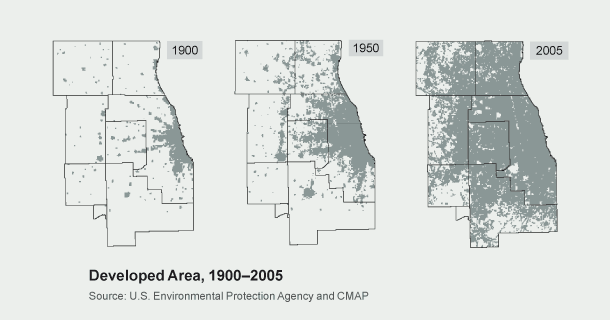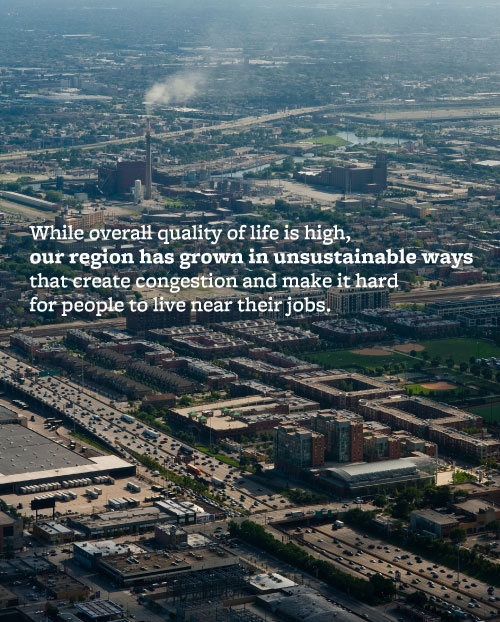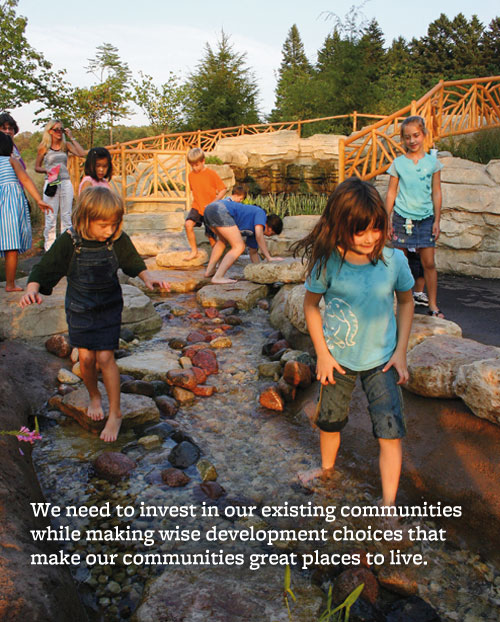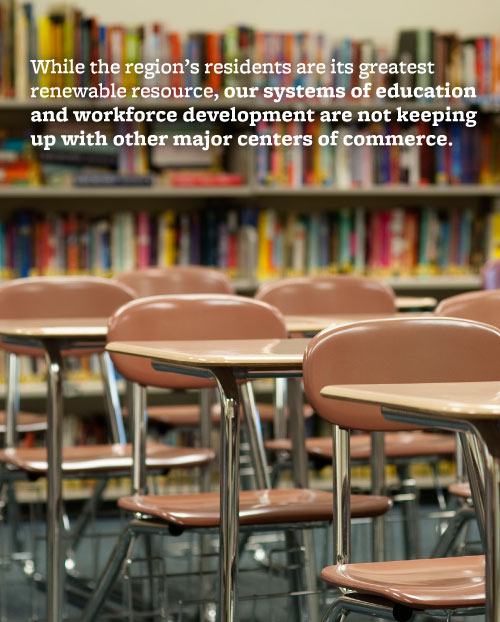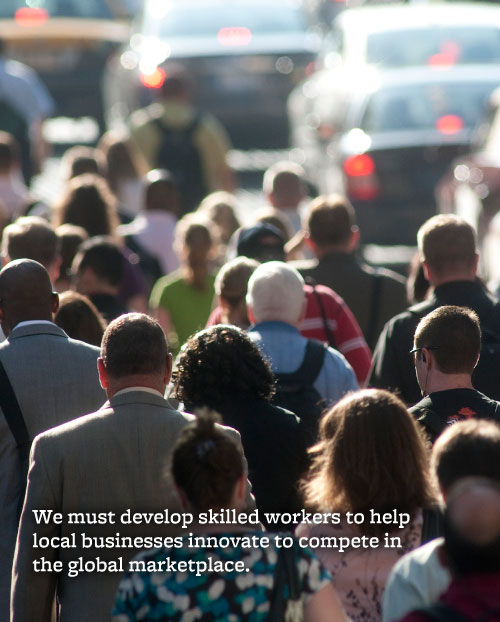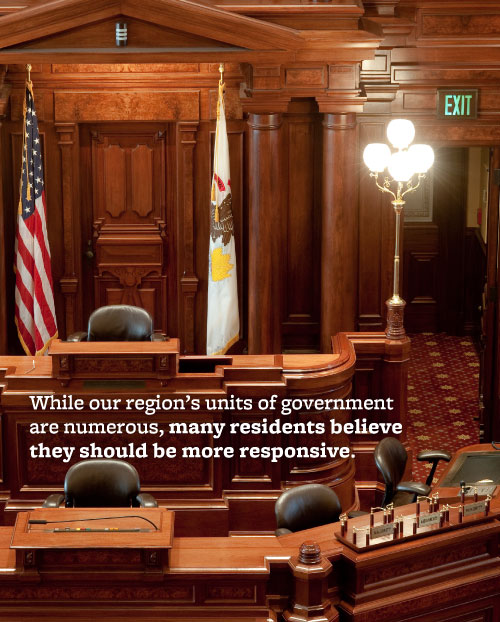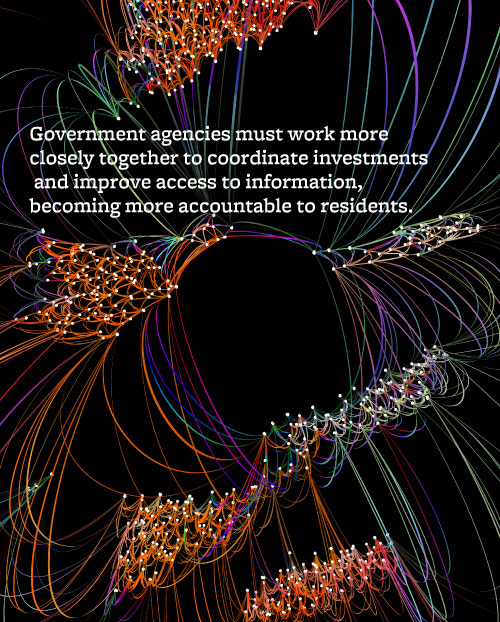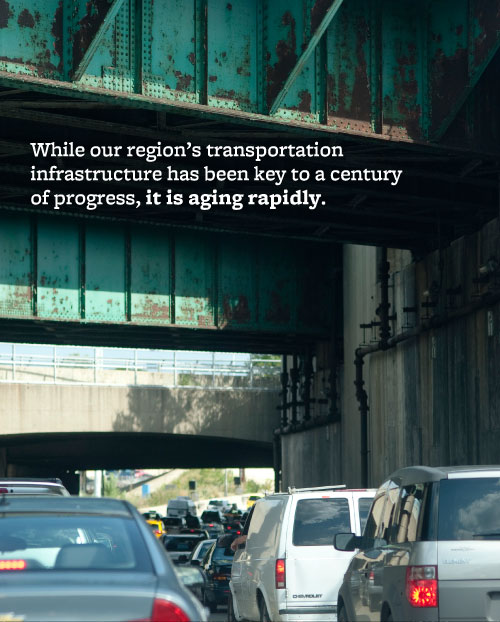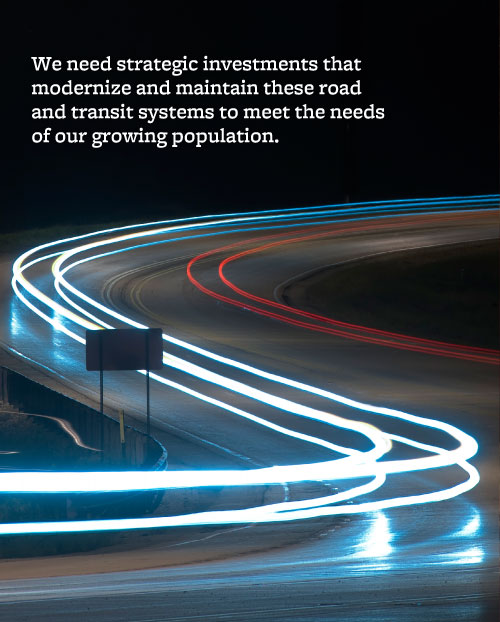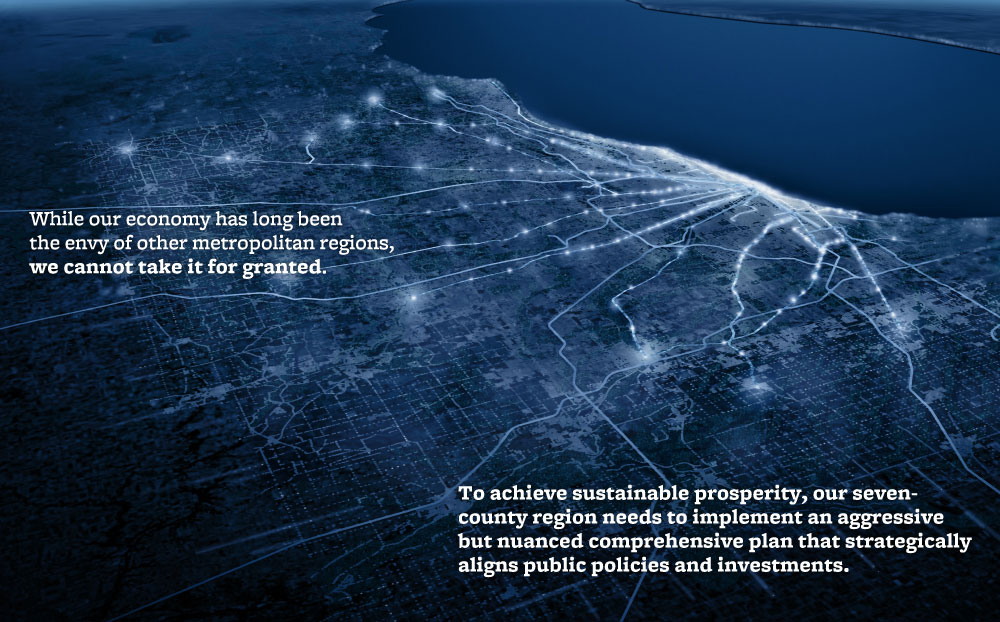We have abundant natural resources — including a magnificent system of parks, open spaces, trails, and waterways — with access to Lake Michigan for drinking water and recreation.
We have a transportation system that moves people and goods, acting as an engine of jobs and prosperity. And the residents of the region themselves are perhaps our greatest renewable resource, constituting a diverse workforce that fuels economic development. But we cannot take our quality of life for granted in the years to come. Stark new economic and environmental realities require the region and its communities to set priorities carefully.
Residents of our region's seven counties — Cook, DuPage, Kane, Kendall, Lake, McHenry, and Will — aspire to and deserve a high quality of life. The mission of the Chicago Metropolitan Agency for Planning (CMAP) is to help the counties and 284 communities plan together for sustainable prosperity through mid-century and beyond.
Download the Challenges and Opportunities chapter of the full plan (PDF).

